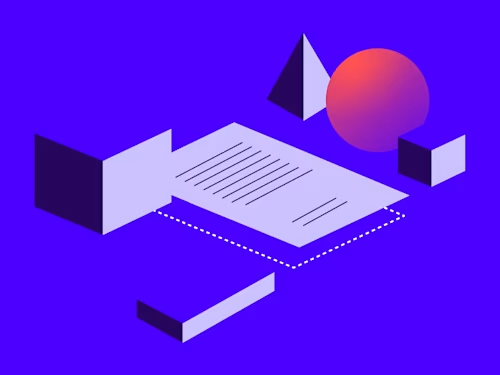
Innovative Organizations Need to Invest in Security Tools to Protect Valuable Data
The 2022 State of the CIO report that 84% of CIOs are in charge of leading the digital revolution at their organizations.

Today’s most ambitious organizations are taking an aggressive approach to technology adoption. Part of what makes these cutting-edge organizations effective is their high-speed, error-embracing philosophy. They build new things quickly, they make mistakes, they learn from them and they improve. For a new product or a web page, some level of failure is tolerable. It might actually be key to an iterative creation process. But with sensitive data, a single failure can be devastating.
Experimenting with new tools can certainly expand a team’s capabilities quickly, but it also makes those teams attractive targets for cybercriminals hunting for sensitive data, employee information, intellectual property and trade secrets. Today’s CIOs have a handful of important strategies to embrace the benefits of a hyperconnected toolkit while protecting against malicious security threats of the modern landscape.
Embrace the high-security-risk, high-reward culture
There’s a generally accepted tradeoff that early adopter organizations make: they accept the risk of untested, immature tools in order to reap the benefits of those solutions before they are widespread.. It’s a gambit that has paid off in some high-profile instances, but the threat potential is too much for some CIOs to stomach. For example, prominent market leaders in the technology sector have been generally open to incorporating employees’ personal devices into the broader tech stack, even before the global move to hybrid work environments. It empowered their teams to work effectively from anywhere, but it also introduced the risk of dubious apps or websites collecting sensitive information.
The CIO is often the tip of the spear in terms of driving technological change. The 2022 State of the CIO report that 84% of CIOs are in charge of leading the digital revolution at their organizations. 86% of them say their role is becoming more focused on digital innovations. Part of their job description is being the earliest of the early adopters. They need to be acutely aware of the risks inherent in new tools and have strategies to safely avoid common pitfalls.
One particularly risky part of the digital transformation is agreements. Since contracts contain sensitive information, it’s often the case that teams are reluctant to change agreement processes. That risk aversion means contracting tools are left behind when the rest of the organization adopts new technology. The resulting system is a hodgepodge of disconnected workflows and an inefficient blend of manual and digital work. More than 50% of the respondents in the 2021 EY Law Survey report lost business due to inefficient agreements. Less than one-third (31%) of respondents follow a standardized contracting playbook and 71% don’t monitor for deviations from standard terms.
Address modern security challenges with technology
With so many new inputs and outputs in the corporate ecosystem, CIOs are focused on any technology that can help them better control data governance across internal platforms. They own data about and for several audiences—employees, customers, regulators, etc.—and need to make sure that exactly the right people and tools have access to certain types of information. With a clear map of which systems access which data and centralized control over the data access, a CIO has all the tools required to ensure the secure handling of critical company information.
To manage all these new companywide tools, the most tech-savvy CIOs are increasing budgets for cybersecurity tools. Those spending plans may differ across industries, but IDG reports that the trend is certainly in favor of additional spending on technological solutions to mitigate security threats.
Outside of the tools in their stack, CIOs are examining their processes to look for improvement opportunities. Because a lot of these companies routinely deal with digital tools and processes, they’re ripe for automation. CIOs are routinely charged with connecting tools to simplify processes, reduce wasted effort and increase revenue.
The State of the CIO research identified automation as the primary activity that CIOs are undertaking to increase revenue. 79% of CIOs say automation has increased in importance over the last 6-12 months.
Protect valuable data with stronger agreements
For a lot of companies, there’s an enormous amount of valuable information in agreements: IP filings, partner agreements, employees’ personal data, sales contracts, etc. These documents hold all of the information that gives an organization its competitive edge. The right place to start is a centralized repository that comprehensively tracks all past actions.
From that starting point, teams can go forward with a simpler contract creation process. Most modern employees are technologically savvy enough to manage simple contract creation on their own. There’s been increasing demand for self-service document agreement tools, but that comes with additional risk. Streamlining agreements via self-service would reduce workflow stoppages, which accelerates revenue. But it would also expose a lot of critical information to new risks.
To build a secure, employee-driven agreement generation platform, CIOs need to make a series of moves to restructure the system of agreement and gain control over the end-to-end agreement process. First, they need to partner with in-house legal experts to create self-service tools with standardized language and templates. They also need to build a system to track terms in those contracts and monitor variance from those terms.
At the broader level, CIOs also need tools that can proactively monitor the organization’s base of contracts, detect threats in real time, send appropriate alerts and respond accordingly. It’s possible for teams to build an agreement process that both protects information in existing contracts and streamlines the creation of new contracts, it just requires a well-designed executive blueprint and a broader commitment to improvement.
Learn more about the Docusign security features that other companies are using with our security overview or set up time to talk to one of our experts about your needs.
Related posts
Discover what's new with Docusign IAM or start with eSignature for free




